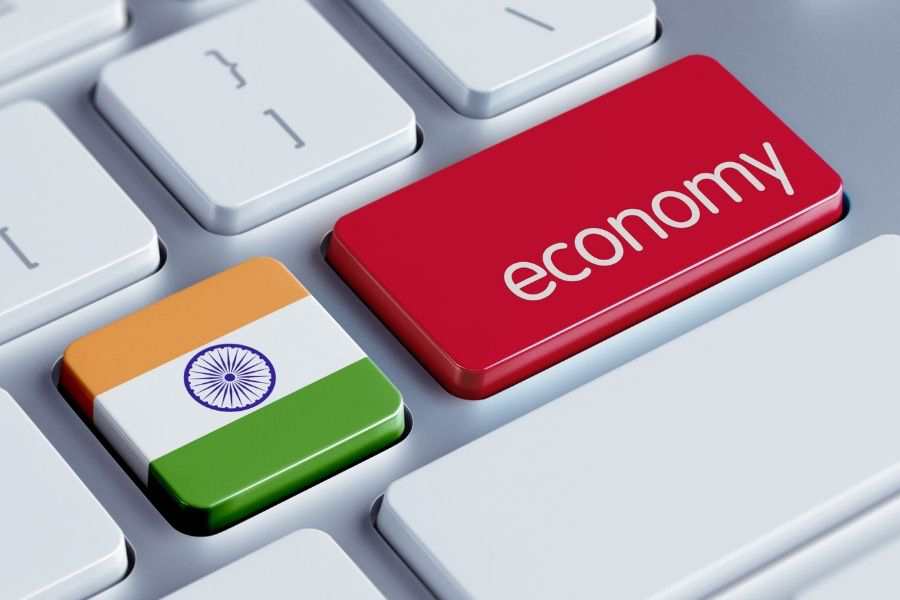Nurturing Growth: Unpacking India’s Budget 2024
The Union Budget for the fiscal year 2024-25 is set to be presented on February 1, against the backdrop of upcoming general elections as the nation stands at a pivotal juncture, facing economic challenges and opportunities.
This year’s budget gains particular significance as it is expected to lay the groundwork for revival and sustainable growth across crucial sectors. Let’s delve into the key highlights and expectations surrounding the budget.

Image Credit: Shutterstock
Finance Minister Nirmala Sitharaman is scheduled to unveil the provisional Union Budget for the fiscal year 2024-25 on February 1, 2024. Despite being a significant year with the impending Lok Sabha Election in April-May, it is anticipated that this budget will not feature major announcements. Instead, minor adjustments and enhancements to existing policies are expected. Below are some of the key projections for the Budget 2024.
- As per a report released by HDFC Bank, it is expected that the total revenue expenditure will rise by 4.2% in FY25. This may include – higher allocations for MNREGA, increased coverage for Ayushman Bharat, an extension of the PM Awas Yojana, and higher income transfers to farmers under PM-Kisan. It is consumption-positive, especially for rural and lower-tier income households in FY25.
- As the country battles with climate change, there may be a push towards sustainable agricultural practices and crop diversification. Additionally, Budget 2024 might introduce measures to strengthen supply chains, reduce post-harvest losses, and improve market linkages, ensuring a more resilient and efficient agricultural ecosystem.
- The Ayushman Bharat Yojana, a flagship government health scheme currently provides Rs 5 lac as health insurance cover per family per year. The central government is considering doubling the insurance amount to Rs 10 lakh. The expansion aims to include critical ailments like cancer and transplants within its coverage.
- The government increased its CAPEX significantly since the COVID-19 pandemic. From Rs 3.36 lakh crore in FY20, the CAPEX target has increased to Rs 10 lakh crore in FY24 which has translated into CAPEX growth of 24% in FY23 and 37.4% in FY24. As per the HDFC report, the CAPEX target is expected to increase by ~10% to Rs 11.0 lakh crores in FY25, with roads and railways getting the majority of the allocation.
- As the country prepares for the Lok Sabha Elections due in April-May this year, no major announcements are expected on the Income tax front. As per the Tax rebate limit, a person with an income up to Rs 7 lakh will not have to pay any tax. The tax structure in the new personal tax regime has also been changed by reducing the number of slabs to five and increasing the tax exemption limit to Rs 3 lakh.
- 0-3 lakh – nil
- 3-6 lakh – 5%
- 6-9 lakh – 10%
- 9-12 lakh – 15%
- 12-15 lakh – 20%
- Above 15 lakh – 30%
Speaking on the upcoming Budget, Dharmakirti Joshi, Chief Economist at CRISIL states:
“We believe that the government will go in for fiscal rectitude even though this is an election year. This will provide macro stability in a volatile global environment and also support RBI’s inflation management efforts.
Redding the deficit, the government will need to pull back a bit on its aggressive budgetary investments undertaken in the last two years. It may take steps to bolster private investment in the interim or the final budget to be presented post elections, assuming it returns to power.”
Apart from these announcements, the Budget 2024-25 might introduce new policies for various sectors including:
Agriculture
The continuous growth of India’s population, coupled with a steady increase in income levels, is driving a consistent rise in the demand for agricultural products, placing a growing burden on existing agricultural resources. The current situation underscores the necessity to enhance productivity while simultaneously reducing costs and improving quality. This is essential to optimize the efficient utilization of the available resources. To strengthen India’s agriculture sector, the government is expected to consider the following:
- The government, through the 2019 introduction of PM Kisan Samman Nidhi, unveiled annual financial assistance of Rs 6000 for small farmers, which is anticipated to increase to Rs 8000 per year in the Budget for 2024-25.
- The government is expected to declare a significant rise in the agricultural credit target to ₹22-25 lakh crore for the upcoming fiscal year, aiming to provide institutional credit access to all eligible farmers. The current fiscal year’s agricultural credit target is ₹20 lakh crore.
- CII has also recommended streamlining food and fertilizer subsidies, the major components of subsidies, through improved targeting and efficient utilization, ensuring no adverse effects on deserving beneficiaries.
Reserve Bank Monetary Policy Committee (MPC) member Ashima Goyal presented her wishlist for Budget 2024 suggesting that the government could consider about imposing income tax on rich farmers to bring fairness to the taxation structure.
Pharmaceuticals
The pharmaceutical sector, elevated in significance by the global pandemic, is expected to receive attention in Budget 2024. The government may allocate resources for bolstering domestic manufacturing capabilities, ensuring a more robust and self-reliant pharmaceutical industry. Investments in research and development, especially for vaccine development and critical drug manufacturing, are likely to be emphasized.
To promote healthcare innovation, the budget might introduce incentives for pharmaceutical companies engaged in research and the production of essential drugs. The emphasis on healthcare infrastructure and workforce development may also feature prominently, reflecting a commitment to strengthening the country’s healthcare backbone.
Green Energy
The pursuit of green and sustainable energy solutions is a global imperative, and India is no exception. Budget 2024 is expected to reinforce the government’s commitment to renewable energy. Increased allocations for solar and wind energy projects, coupled with incentives for green technology adoption, may be prominent features.
The budget might introduce measures to encourage private investment in the renewable energy sector, promoting partnerships between the government and industry players. In line with global climate goals, there could be a push for reducing carbon emissions and increasing energy efficiency, fostering a cleaner and more sustainable energy landscape.
India is contemplating a third phase extension of the electric vehicle incentive scheme, to be disclosed in the upcoming interim budget on February 1. The enhanced scheme, with a proposed allocation of ₹10,000-12,000 crore, focuses on promoting electric vehicle adoption and production, particularly in mass transportation and alternative fuels.
Budget 2024 plays a crucial role in realizing ambitious goals such as attaining 500 GW of non-fossil energy capacity by 2030 and sourcing 50% of energy needs from renewables. It has the potential to cultivate a sustainable energy environment by addressing aspects like green hydrogen, solar and wind energy, battery storage, and carbon markets. Moreover, the government might introduce a new EV Policy, to promote local EVs instead of imported vehicles.
As the nation eagerly awaits the unveiling of Budget 2024, the expectations are diverse and significant across various sectors. The budget represents an opportunity for strategic interventions that can spur growth, innovation, and resilience.
Agricultural reforms to ensure sustainable farming practices, pharmaceutical investments for healthcare resilience, green energy initiatives to combat climate change, and support for the food and beverage industry to foster economic nourishment—all these elements are crucial for India’s holistic development.
The hope is that Budget 2024 catalyzes transformative change, addressing the immediate needs of these vital sectors while laying the foundation for a more robust, sustainable, and inclusive economic future. As policymakers, industry leaders, and citizens eagerly analyze the budgetary allocations, the overarching goal remains clear: to sow the seeds of prosperity, resilience, and sustainability across key sectors, propelling India into a brighter and more resilient future.












Leave a comment